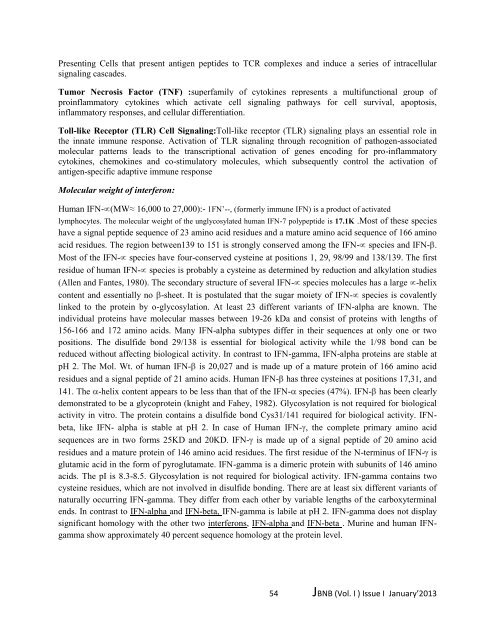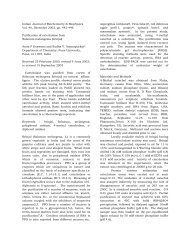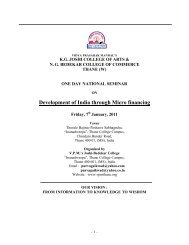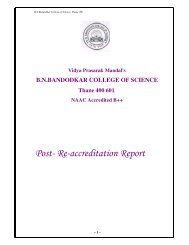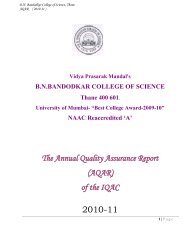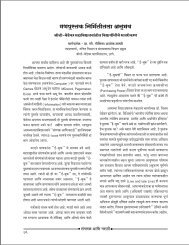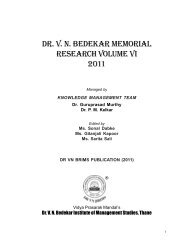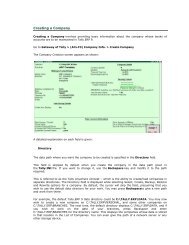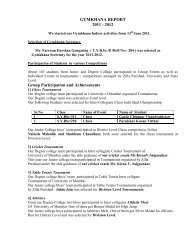J-BNB - VPMThane.org
J-BNB - VPMThane.org
J-BNB - VPMThane.org
Create successful ePaper yourself
Turn your PDF publications into a flip-book with our unique Google optimized e-Paper software.
Presenting Cells that present antigen peptides to TCR complexes and induce a series of intracellular<br />
signaling cascades.<br />
Tumor Necrosis Factor (TNF) :superfamily of cytokines represents a multifunctional group of<br />
proinflammatory cytokines which activate cell signaling pathways for cell survival, apoptosis,<br />
inflammatory responses, and cellular differentiation.<br />
Toll-like Receptor (TLR) Cell Signaling:Toll-like receptor (TLR) signaling plays an essential role in<br />
the innate immune response. Activation of TLR signaling through recognition of pathogen-associated<br />
molecular patterns leads to the transcriptional activation of genes encoding for pro-inflammatory<br />
cytokines, chemokines and co-stimulatory molecules, which subsequently control the activation of<br />
antigen-specific adaptive immune response<br />
Molecular weight of interferon:<br />
Human IFN- (MW≈ 16,000 to 27,000):- 1FN‘--, (formerly immune IFN) is a product of activated<br />
lymphocytes. The molecular weight of the unglycosylated human IFN-7 polypeptide is 17.1K .Most of these species<br />
have a signal peptide sequence of 23 amino acid residues and a mature amino acid sequence of 166 amino<br />
acid residues. The region between139 to 151 is strongly conserved among the IFN- species and IFN- .<br />
Most of the IFN- species have four-conserved cysteine at positions 1, 29, 98/99 and 138/139. The first<br />
residue of human IFN- species is probably a cysteine as determined by reduction and alkylation studies<br />
(Allen and Fantes, 1980). The secondary structure of several IFN- species molecules has a large -helix<br />
content and essentially no -sheet. It is postulated that the sugar moiety of IFN- species is covalently<br />
linked to the protein by o-glycosylation. At least 23 different variants of IFN-alpha are known. The<br />
individual proteins have molecular masses between 19-26 kDa and consist of proteins with lengths of<br />
156-166 and 172 amino acids. Many IFN-alpha subtypes differ in their sequences at only one or two<br />
positions. The disulfide bond 29/138 is essential for biological activity while the 1/98 bond can be<br />
reduced without affecting biological activity. In contrast to IFN-gamma, IFN-alpha proteins are stable at<br />
pH 2. The Mol. Wt. of human IFN- is 20,027 and is made up of a mature protein of 166 amino acid<br />
residues and a signal peptide of 21 amino acids. Human IFN- has three cysteines at positions 17,31, and<br />
141. The -helix content appears to be less than that of the IFN- species (47%). IFN- has been clearly<br />
demonstrated to be a glycoprotein (knight and Fahey, 1982). Glycosylation is not required for biological<br />
activity in vitro. The protein contains a disulfide bond Cys31/141 required for biological activity. IFNbeta,<br />
like IFN- alpha is stable at pH 2. In case of Human IFN- , the complete primary amino acid<br />
sequences are in two forms 25KD and 20KD. IFN- is made up of a signal peptide of 20 amino acid<br />
residues and a mature protein of 146 amino acid residues. The first residue of the N-terminus of IFN- is<br />
glutamic acid in the form of pyroglutamate. IFN-gamma is a dimeric protein with subunits of 146 amino<br />
acids. The pI is 8.3-8.5. Glycosylation is not required for biological activity. IFN-gamma contains two<br />
cysteine residues, which are not involved in disulfide bonding. There are at least six different variants of<br />
naturally occurring IFN-gamma. They differ from each other by variable lengths of the carboxyterminal<br />
ends. In contrast to IFN-alpha and IFN-beta, IFN-gamma is labile at pH 2. IFN-gamma does not display<br />
significant homology with the other two interferons, IFN-alpha and IFN-beta . Murine and human IFNgamma<br />
show approximately 40 percent sequence homology at the protein level.<br />
54 J<strong>BNB</strong> (Vol. I ) Issue I January’2013


